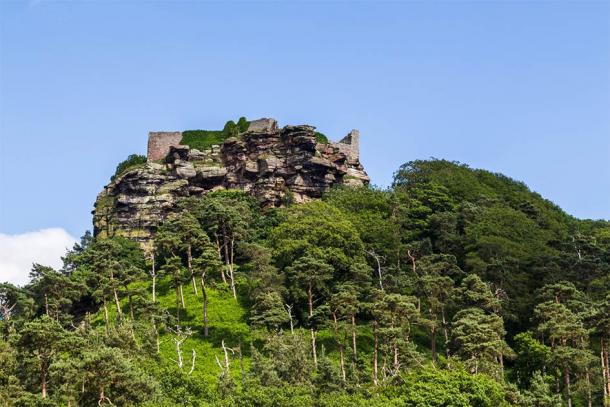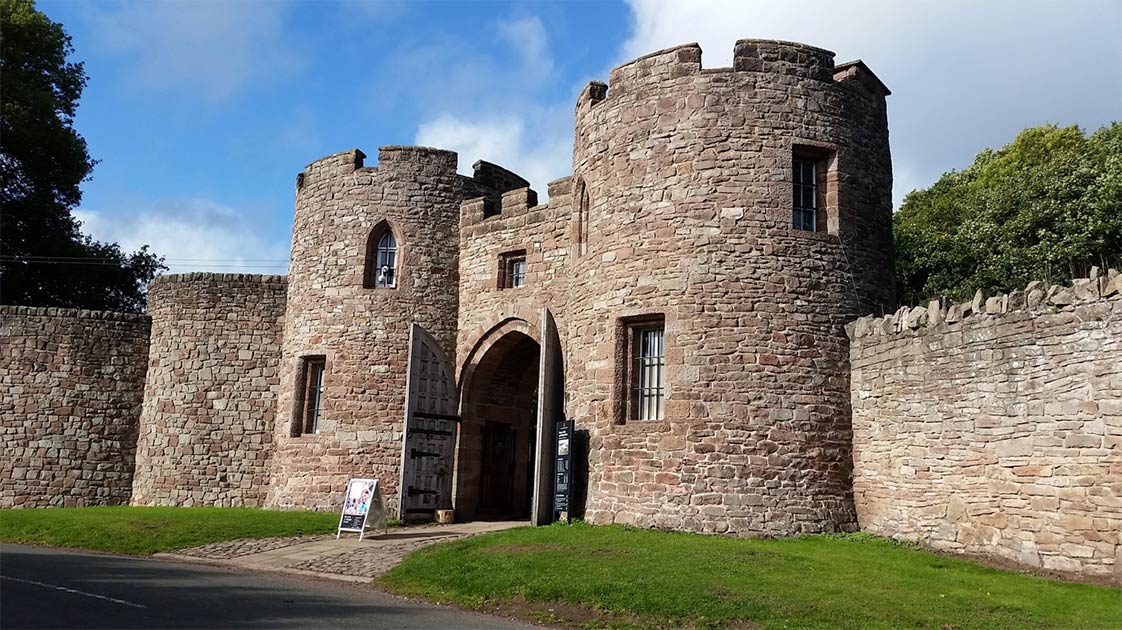Could the King Richard II’s Gold Still Be Hidden at Beeston Castle?
Perched on a large crag, Beeston Castle is one of the most dramatically situated medieval castles in England. Although what remains today represents the feats of medieval builders, much of what is important about Beeston is no longer visible. People have been drawn to the crag for millennia and used the site from as far back as the Neolithic period.
Metal Works and Salt Deposits on the Trade Networks
Pits and flint tools dating from the 4th millennium BC indicate the site was inhabited during the Neolithic period. There is also evidence of early Bronze Age (c 2000–1500 BC) burial mounds and funerary material found on the lower part of the crag.
The site boasted a major metalworking site and among the most significant finds are two socketed axes that had been deliberately buried beneath the earthwork bank, possibly as an offering. Crops such as cereals were stored and processed, and pottery used to transport salt verifies that Beeston was part of a trade network. Wooden palisades defenses at the bottom of the crag protected valuable metalwork and agricultural surplus.
During the baronial civil war of King John’s reign, Ranulf, Earl of Chester (1170–1232), supported the royal cause and received titles, castles and land across England in return for his loyalty. In 1218, Ranulf left England to take part in the fifth crusade. He returned in 1220 and began work on Beeston. Ranulf incorporated the banks of an earlier Iron Age hillfort and modelled the design of the ditch on those seen in the Holy Land. The gatehouses, much of the inner ward curtain wall, and towers on the outer wall date to this period. It was originally known as the 'Castle on the Rock'.

Stained glass depicting the Crusades and siege of Jerusalem (Jorisvo / Adobe Stock)
Ranulf used the natural features of the land, such as the sheer drops on three sides, with massive walls, strong gatehouses, and carefully positioned towers as his defense. The castle sat on the summit of the hill, with an outer bailey built on the lower slopes. The large gatehouse was protected by a ditch 16 feet (5 m) wide and 10 feet (3 m) deep. To provide the castle's inhabitants with fresh water, wells were dug into the rock. One at 370 feet (113 m) deep, is one of the deepest castle wells in England. According to legend, it was the hiding place of Richard II's treasure which he stashed before leaving England in 1399 to quell the rebellion in Ireland. The treasure has never been found.
Beeston was inherited by nephew John le Scot and when he died without heir in 1237, the honor of Chester was bought from Ranulph's sisters by Henry III, who used it as a prison for his Welsh captives.
In 1254, Henry III granted Beeston and the Earldom of Chester to his son who succeeded him in 1272. Edward I kept Beeston in good repair during his reign. By the 16th century, however, the castle was of no further use to the Crown, and in 1602 it was sold to Sir Hugh Beeston.
Beeston’s Role in the Civil War
Following the outbreak of the Civil War in 1642, Beeston’s location made it valuable to both the supporters of King Charles I and Parliament.
- Caerphilly Castle, Wales - Strategically Brilliant for Its Time and Haunted in Ours
- A History of the Crusades As Told by Crusaders' DNA
- 10 Spectacular Treasures That Have Never Been Found

The location on Beeston Castle on the summit of the dramatic crag, Cheshire (Jason Wells / Adobe Stock)
In 1643 a Parliamentary garrison of more than 200 men was installed in the castle but, a handful of Royalists managed to breech the defenses. With more Royalists at the gate, Captain Thomas Steele surrendered on the promise that he would be allowed to leave the castle with honors. He was tried and shot for his failure to hold the castle. Skirmishes continued until the defeat of the king near Chester in 1645. The siege works were dismantled, and Beeston was partly demolished to prevent its further use as a bastion.
The estate, including Beeston Castle, was bought by Baron John Tollemache in 1840. Tollemache built a Gothic mansion, Peckforton Castle, on a hillside to the south in 1844 and Beeston’s ruins were a focal point. The trend for building follies, or incorporating ruined buildings into gardens and landscapes, was the aspiration of many wealthy landowners in the 18th and 19th centuries. Beeston is one of the most dramatic examples of its kind.
Visiting the Glorious Ruins of Beeston Castle
Beeston Castle develop as a tourist attraction in the 19th century and in 1945 the annual Beeston Castle fête was established and is held every August. It was passed to English Heritage in 1984. Although in ruins, enough remains to provide a picture of how it would have looked in its prime.

The panoramic views from Beeston Castle (Winstone, M / CC BY-NC 2.0)
Beeston is open to visitors who can also visit the small museum and visitor's center. Reputedly the best views from any castle in England, they stretch across eight counties, from the Pennines to the Welsh mountains. From Beeston Castle it’s approximately a 20 minute walk to Peckforton Castle.
Top image: Beeston Castle entrance Source: Dunja / Adobe Stock
References
Prince, E. E. 2020. John "le Scot" Canmore, 7th Earl of Chester. Geni
Available at: https://www.geni.com/people/John-le-Scot-Canmore-7th-Earl-of-Chester/6000000002090135531
Staff Writer. Beeston Castle and Woodland Park. English Heritage.
Available at: https://www.english-heritage.org.uk
Staff Writer.2016. Beeston Castle. CastlesFortsBattles
Available at: http://www.castlesfortsbattles.co.uk/north_west/beeston_castle.html



















